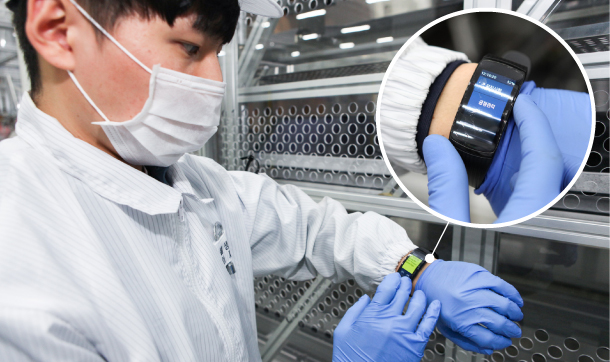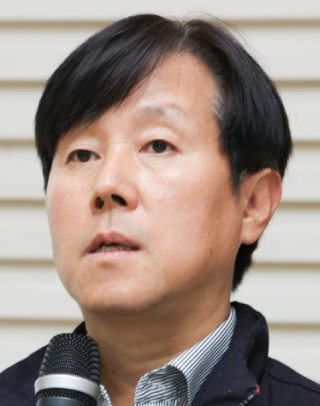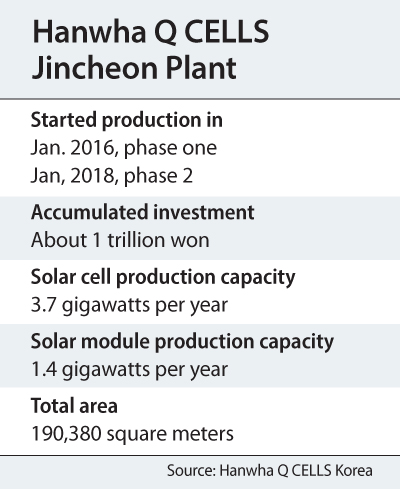Hanwha gets smart about solar cell production

An employee at Hanwha Q Cells Korea introduces a wearable device adopted at the company’s new plant in Jincheon County, North Chungcheong, on Tuesday. [HANWHA Q CELLS]
Hanwha Q Cells, the group’s solar cell producer, is now one of the largest manufacturers in the industry, but competition is getting much tougher. Even some of the more established companies in Europe and the United States are struggling due to fast-growing Chinese manufacturers, according to Hanwha. As a result, the United States imposed tariffs on solar cell and module imports earlier this year.

Ryu Seong-joo
The Jincheon 2 plant, which started mass production of solar cells and modules in January, is an addition to the original complex built in 2016. With the first and second plant combined, the Jincheon facility is the largest single solar cell production site in the world, according to Hanwha, with 3.7 gigawatt production capacity.
When the Korea JoongAng Daily visited the solar cell production line on the third and fourth floor of the newly-built plant on Tuesday, some workers were moving busily from machine to machine wearing what looked like a smart watch.
“It looks like a smart watch because we took the hardware from electronics companies like Samsung,” a spokesperson from Hanwha said. “But we applied our own software so that workers receive alarms when there are problems with the machines.”
According to the solar cell maker, the watch does not provide a detailed cause or explanation of the problems, but it makes workers respond immediately to issues by alarming them with notices categorized into four stages - S, A, B and C - depending on the severity and complexity of the problem.
The system means that just 40 workers are required to manage 220 machines lined-up horizontally in five production lines in the 330-meter-long (1082 feet) solar cell production room, according to Hanwha.
Another unusual scene inside the plant was a huge stack of 200 solar cells moving around over workers’ heads.
“We call it a cassette,” said Yang Byung-ki, a manager of cell production at Hanwha Q Cells Korea, the company in charge of cell production in Korea. “This automated overhead logistics system delivers solar cells quickly and safely to the next destination.”
The automated delivery system moves cells through the 10 stages of production.

“Based on the big data collected through these cells, we find out what caused the problems with a specific cell,” Yang added. “This technology is something only Hanwha’s solar cell plants have, though such a method could be quite common in semiconductor plants.”
According to Ryu Seong-joo, head of the Jincheon plant, the digitalization of the factory made it possible to produce 3.7 gigawatt cells per year at half the workforce needed for the production of 2.5 gigawatt cells in Hanwha’s cell production plant in China.
There are other measures Hanwha is taking to bolster its competitiveness in the solar business.
The group announced last month it will merge its solar affiliates to simplify the governance structure and bolster business efficiency.
Based on the announcement, domestic solar cell maker Hanwha Q Cells Korea will complete a merger with auto and solar materials company Hanwha Advanced Materials by tomorrow.
Hanwha Q Cells Korea, which operates solar cell plants in Korea, is different from Hanwha Q Cells, listed on the United States Nasdaq.
On whether the two companies are likely to merge, Yoon Joo, head of global sales planning at Hanwha Q Cells, said, “Hanwha is reviewing diverse options to increase synergies in solar affiliates within the group, but nothing has been fixed regarding the two companies.”
BY KIM JEE-HEE [kim.jeehee@joongang.co.kr]










with the Korea JoongAng Daily
To write comments, please log in to one of the accounts.
Standards Board Policy (0/250자)